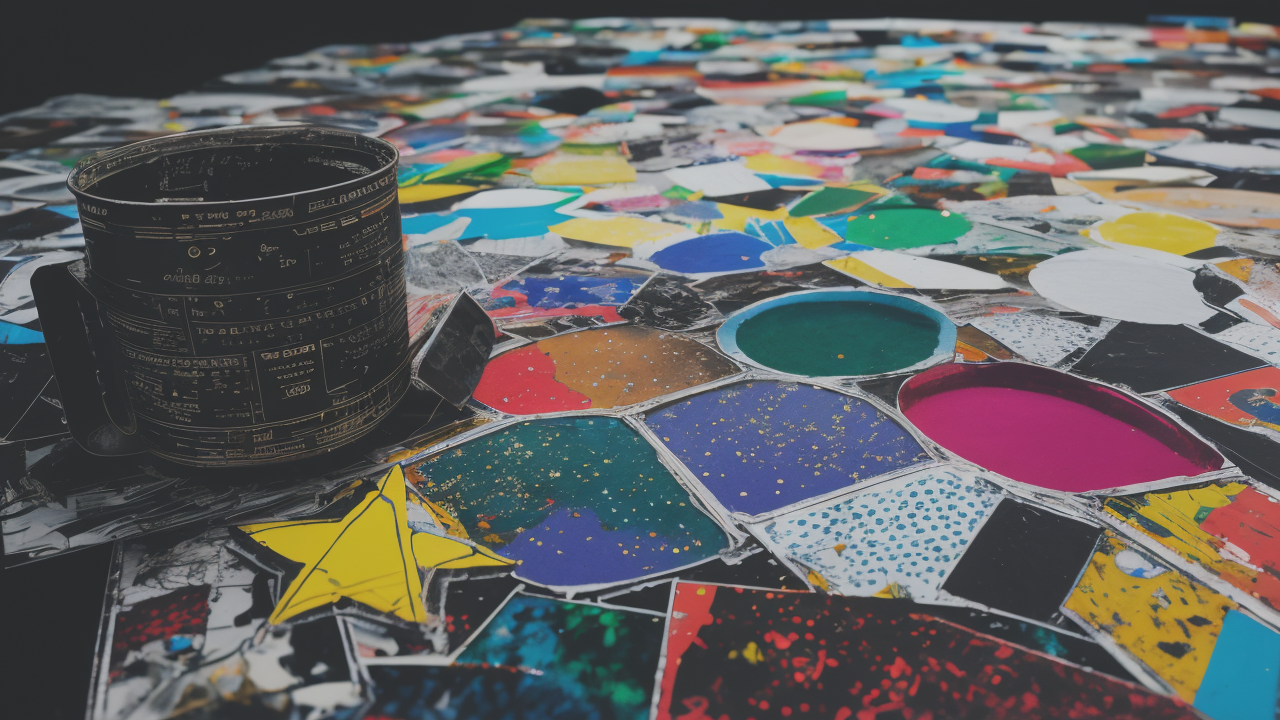
The Evolution of Abstract Pop Art: Tracing the Colorful Legacy of Iconic Artpieces
The Origins of Abstract Pop Art in the United States
Pioneering Movements That Shaped the Aesthetic
Abstract pop art emerged in the mid-20th century as a vibrant fusion of two distinct art movements. It combined the bold colors and familiar imagery of pop art with the non-representational style of abstract art. This unique blend created a new visual language that captivated audiences worldwide.

The roots of abstract pop art can be traced back to the 1950s and 1960s. During this time, artists began to challenge traditional art forms. They sought new ways to express the rapidly changing American culture. The result was a style that embraced both abstraction and popular culture.
Key movements that influenced abstract pop art include:
- Abstract Expressionism
- Pop Art
- Op Art
- Minimalism
These movements paved the way for artists to experiment with form, color, and subject matter. They broke down barriers between "high" and "low" art, making art more accessible to the masses.
The Influence of Cultural Icons on Visual Art
Cultural icons played a crucial role in shaping abstract pop art. Artists drew inspiration from various sources in popular culture. These included:
- Advertisements
- Comic books
- Consumer products
- Hollywood celebrities
- Music icons
By incorporating these elements, artists created works that resonated with the public. They transformed everyday objects and images into powerful artistic statements. This approach challenged traditional notions of what could be considered art.
Abstract pop artists often used repetition and bold colors to emphasize their subjects. They manipulated familiar images to create new meanings. This technique allowed them to comment on consumerism, mass media, and American culture.
The influence of cultural icons on abstract pop art was profound. It helped bridge the gap between fine art and popular culture. As a result, it made art more relatable and engaging for a wider audience.
The Iconic Artists Behind the Iconic Artworks
Key Figures in the History of Pop Art
Several artists played pivotal roles in shaping the abstract pop art movement. Their unique styles and innovative approaches left an indelible mark on the art world. Some of the most influential figures include:

- Andy Warhol: Known for his iconic Campbell's Soup Cans and celebrity portraits.
- Roy Lichtenstein: Famous for his comic book-inspired paintings with bold outlines and Ben-Day dots.
- Jasper Johns: Renowned for his paintings of American flags and targets.
- Robert Rauschenberg: Celebrated for his "Combines" that blended painting and sculpture.
- Claes Oldenburg: Recognized for his oversized sculptures of everyday objects.
These artists challenged conventional ideas about art and its role in society. They pushed boundaries and explored new techniques. Their works became synonymous with the abstract pop art movement.
How Artists Innovated to Create Timeless Masterpieces
Abstract pop artists employed various innovative techniques to create their masterpieces. They experimented with different mediums, colors, and compositions. This experimentation led to the creation of timeless works that continue to captivate audiences today.
Some common techniques used by abstract pop artists include:
- Screen printing
- Collage
- Mixed media
- Found object art
- Large-scale sculptures
Artists like Warhol pioneered the use of screen printing in fine art. This technique allowed for mass production of images, blurring the line between art and commerce. Rauschenberg's "Combines" merged painting and sculpture, creating three-dimensional artworks.
Lichtenstein's use of Ben-Day dots, inspired by comic book printing, became a hallmark of his style. Johns' textured surfaces and use of encaustic added depth to his seemingly simple subjects.
These innovations not only created visually striking artworks but also challenged viewers to reconsider their perception of art. The artists' ability to transform familiar objects into thought-provoking pieces ensured their lasting impact.
The Impact of Abstract Pop Art on Modern Culture
Transformative Influence on American Consumer Culture
Abstract pop art had a profound impact on American consumer culture. It blurred the lines between art and everyday life. This movement changed how people viewed and interacted with consumer goods and popular imagery.

The bold colors and familiar subjects of abstract pop art found their way into various aspects of daily life. They influenced:
- Advertising
- Product packaging
- Fashion design
- Interior decoration
Companies began incorporating pop art aesthetics into their branding and marketing strategies. This led to more visually appealing and eye-catching designs. Consumer goods became not just functional items, but also potential art pieces.
The movement also challenged the notion of art as an elite pursuit. It made art more accessible and relatable to the general public. People could see reflections of their daily lives in galleries and museums.
Abstract pop art's influence extended beyond visual culture. It shaped attitudes towards consumerism and mass media. It encouraged a more critical view of advertising and popular culture.
Legacy of Pop Art in Contemporary Visual Design
The legacy of abstract pop art continues to thrive in contemporary visual design. Its influence can be seen in various fields, including:
- Graphic design
- Web design
- Packaging design
- Digital art
- Street art
Modern designers often draw inspiration from the bold colors and simple shapes of pop art. They use similar techniques to create visually striking and memorable designs.
In the digital age, pop art aesthetics have found new life in social media and online content. Memes and digital illustrations often incorporate pop art elements. This shows the enduring appeal of the movement's visual language.
The movement's emphasis on accessibility and mass appeal continues to shape design philosophy. Many designers strive to create work that is both visually appealing and easily understood by a wide audience.
Abstract pop art's legacy is also evident in the continued blurring of lines between commercial and fine art. Many contemporary artists create works that comment on consumer culture and mass media.
In conclusion, abstract pop art's colorful legacy continues to shape our visual world. Its influence extends far beyond the art gallery, touching nearly every aspect of modern visual culture.


